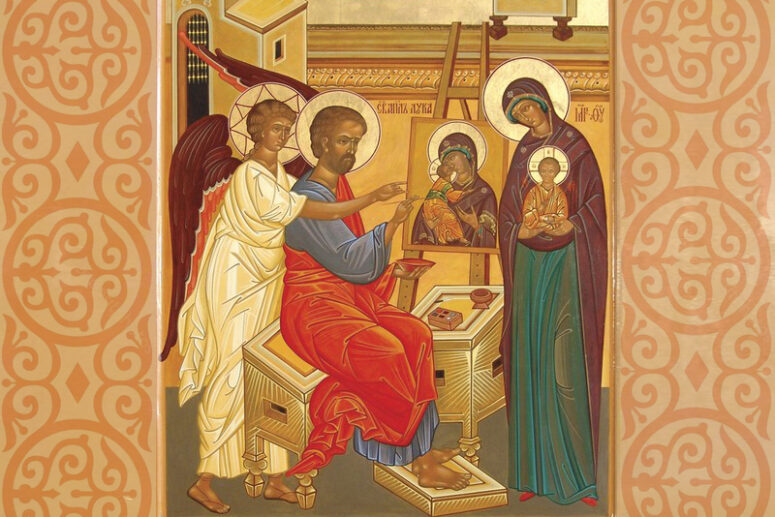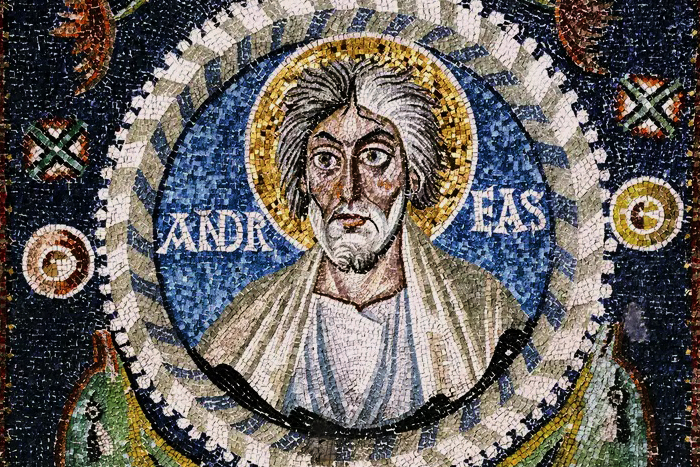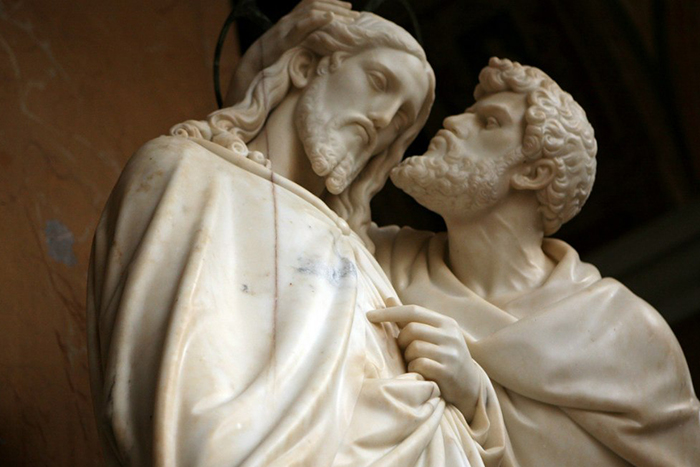
We owe a great deal to the Apostle Luke for telling us more than other evangelists about the Most Holy Theotokos and the childhood of Jesus Christ. Also, according to Holy Tradition, St. Luke was the first to paint several images of the Most Pure Virgin still during Her earthly life, which formed the basis of all iconography. There are however those who doubt this fact. Our article is an attempt to understand the issue.
Why Does the New Testament Say Nothing about This?
Indeed, the information that St Luke was an icon painter does not appear anywhere in the Holy Scriptures. From St Paul’s epistle to the Colossians, we learn only that Luke had mastered the art of healing.
The fact that the Apostle Luke was also a painter is known to us only from Sacred Tradition. The life of the evangelist written by St Dimitry of Rostov is also based on Tradition. Ancient church writers report that St Luke […] was the first to use paint to create an image of the Most Holy Theotokos holding the Infant Jesus Christ in her arms. After that he painted two more icons of the Most Pure Lady and brought them to Her. Upon seeing the apostle’s works, the Mother of God said: “May the grace of Him who was born of Me and My mercy be upon these icons.“ Later, the Evangelist also depicted on wooden boards the holy apostles Peter and Paul, thus laying the foundation for writing holy icons to the glory of God, His Most Pure Mother and all Saints.
Why Was this Fact Not Mentioned at the Seventh Ecumenical Council?
The absence of any mention of St Luke’s icons by the fathers at the seventh Ecumenical Council is considered a serious argument against their real existence. The exact reason for that is, unfortunately, unknown, but there are two possible versions. According to one, the council was held at a time when the holy apostle’s icon was no longer in Constantinople, which made it impossible to refer to it as an evident proof of venerating icons at the beginning of the new era. Contrariwise, the other version assumes that the fathers of the Nicene Council were too well aware of this image, which was why they did not mention it as some kind of new proof.
What Documents Call the Apostle Luke an Icon Painter?
The earliest surviving historical document that mentions the Holy Apostle Luke as an icon painter dates back to the beginning of the 6th century. In this document, the historian Theodorus Lector (Anagnostes) reports that the widow Empress Aelia Eudocia sent “the greatest relic”, the image of the Mother of God, written by the Evangelist Luke, from Palestine to her sister Pulcheria, the wife of Emperor Marcian in Constantinople.
Two centuries later, this fact is mentioned by the theologian St Andrew of Crete. St Andrew says that St Luke “with his own hand depicted both the incarnate Christ and His immaculate Mother,” and that these images, known in Rome, were located in Jerusalem.
The next reference can be found in the life of St Stephen the New (of Mt. St Auxentius). In the 8th century Patriarch Germanus I of Constantinople, defending the veneration of icons and calling on the Emperor Leo III the Isaurian to abandon iconoclasm, referred to the Not-Made Image of the Savior and the icon of the Blessed Virgin painted by the Apostle Luke.
At the beginning of the 10th century, the historian St Simeon the Metaphrast, compiler of 132 biographies of saints, known for his close attention to the accuracy of facts, wrote: “The most gratifying thing is that Luke the Evangelist depicted with wax and paints the human form of my Christ and the image of the One who gave birth and humanity to Him, thus passing it on to be honored even to this day…”
In subsequent centuries, information about the Apostle Luke as an icon painter continued to appear in the writings of eminent theologians in the West (Archbishop Theophanes Kerameus of Taormina in his Talks, Nikephoros Kallistos in his Church History), and later in Russia (St Dimitry of Rostov in the Life of the Evangelist).
The earliest Russian source mentioning the apostle as an icon painter was found in the Moscow annals of the late 15th century. Under year 1204 it says that Luke painted the icon of Hodegetria, and under 1395 – that the image of the Vladimir Mother of God was painted by his hand.
Depicting St Luke the Apostle as an Icon Painter
Images of St Luke, as well as other evangelists, have been spread for a long time. However, depicting the apostle as an icon painter, either in mural painting, miniatures or icons, is not met until much later (around the 14th century, based on the surviving samples). The Greek guide to icon painting called “Herminia” (early 18th century, presumably based on earlier texts of the 16th century) gives a brief description of the holy apostle: “The Evangelist Luke is not old, with curly hair, a little beard, is presented writing an icon of the Holy Virgin.“ The oldest such image is a wall painting located in the Church of the Nativity of the Theotokos at the Mateiche monastery in Macedonia, attributed to the 14th century. After the end of the 15th century such images of the Apostle Luke also appear in Russian manuscripts of the Gospel, as well as The Legend of the Hodegetria Icon of the Theotokos.



View Holy Apostle Luke icon in the catalog
The above facts show how the Orthodox Church has preserved testimony of the Holy Tradition about St Luke as the first icon painter. This legacy has significantly grown, developed and enriched. The pious icon painting work of the holy apostle continues for almost two millennia through numerous copies of his icons, conveying the same grace that the Theotokos bestowed on Her prototypes. The veneration of St Luke, as a recognized founder and master of “The Gospel in Paint”, finds expression in Orthodox icon painting and hymnography up to the present day.
Quite literally, in every church there is at least one icon of the Mother of God, whose original authorship is attributed to St Luke. The number of icons that the apostle is likely to have written, what type they were and whether any ancient samples have survived – all of this is going to be the topic of a separate article.





Thats a deep and lovely study but can i have the exact sources of each of these? if this won’t be exhaustive to you of course
First time it was mentioned is the sixth century, yeah, this just sounds like it was made up in the sixth century.